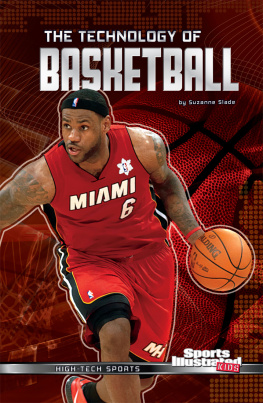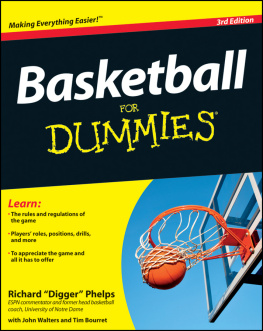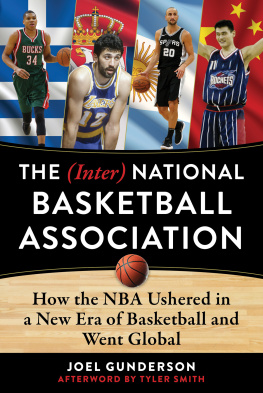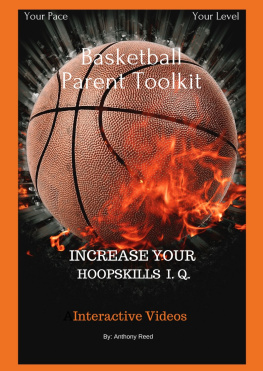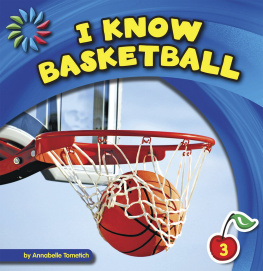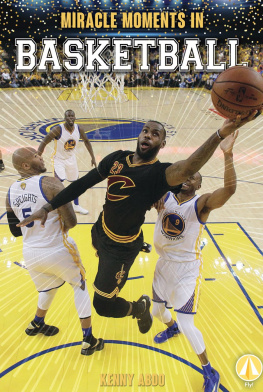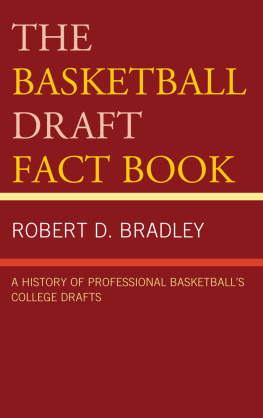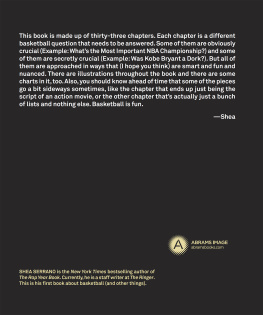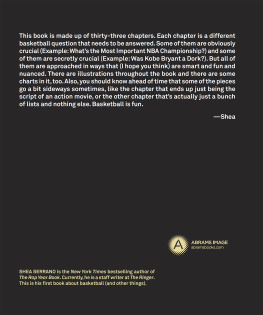National Basketball Association - Great Moments in Basketball History
Here you can read online National Basketball Association - Great Moments in Basketball History full text of the book (entire story) in english for free. Download pdf and epub, get meaning, cover and reviews about this ebook. City: New York;NY;United States, year: 2009, publisher: Little, Brown Books for Young Readers;Hachette Book Group, genre: Non-fiction. Description of the work, (preface) as well as reviews are available. Best literature library LitArk.com created for fans of good reading and offers a wide selection of genres:
Romance novel
Science fiction
Adventure
Detective
Science
History
Home and family
Prose
Art
Politics
Computer
Non-fiction
Religion
Business
Children
Humor
Choose a favorite category and find really read worthwhile books. Enjoy immersion in the world of imagination, feel the emotions of the characters or learn something new for yourself, make an fascinating discovery.

- Book:Great Moments in Basketball History
- Author:
- Publisher:Little, Brown Books for Young Readers;Hachette Book Group
- Genre:
- Year:2009
- City:New York;NY;United States
- Rating:4 / 5
- Favourites:Add to favourites
- Your mark:
- 80
- 1
- 2
- 3
- 4
- 5
Great Moments in Basketball History: summary, description and annotation
We offer to read an annotation, description, summary or preface (depends on what the author of the book "Great Moments in Basketball History" wrote himself). If you haven't found the necessary information about the book — write in the comments, we will try to find it.
Great Moments in Basketball History — read online for free the complete book (whole text) full work
Below is the text of the book, divided by pages. System saving the place of the last page read, allows you to conveniently read the book "Great Moments in Basketball History" online for free, without having to search again every time where you left off. Put a bookmark, and you can go to the page where you finished reading at any time.
Font size:
Interval:
Bookmark:
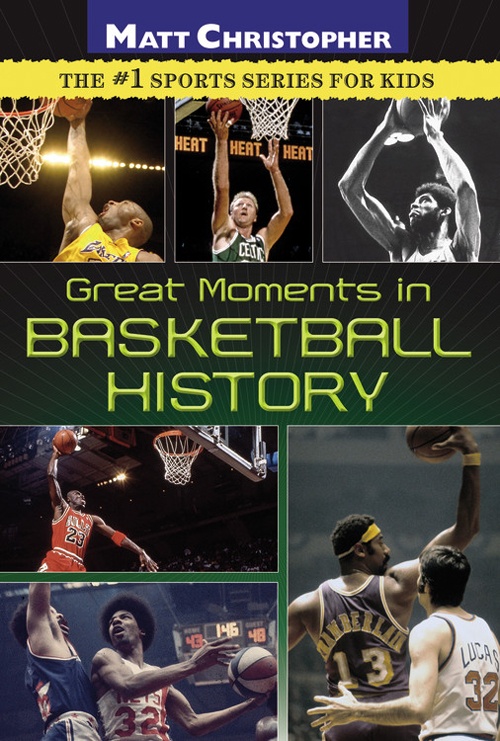
Copyright 2009 by Matt Christopher Royalties, Inc.
All rights reserved. Except as permitted under the U.S. Copyright Act of 1976, no part of this publication may be reproduced, distributed, or transmitted in any form or by any means, or stored in a database or retrieval system, without the prior written permission of the publisher.
Little, Brown Books for Young Readers
Hachette Book Group
237 Park Avenue, New York, NY 10017
Visit our website at www.HachetteBookGroup.com
www.twitter.com/littlebrown
Little, Brown and Company is a division of Hachette Book Group, Inc.
The Little, Brown name and logo are trademarks of Hachette Book Group, Inc.
First eBook Edition: October 2009
Matt Christopher is a registered trademark of
Matt Christopher Royalties, Inc.
Text written by Stephanie Peters
ISBN: 978-0-316-08248-8
DECEMBER 1891
No book about great moments in basketball history would be complete without mentioning the greatest achievement of all: the creation of the sport itself! Unlike many popular sports that evolved gradually from existing games, basketball sprang from one mans imagination.
James A. Naismith was a physical education instructor at the International Young Mens Christian Association Training School in Springfield, Massachusetts, in 1891. Chief among his duties was to lead classes through daily indoor exercise routines. Those routines included marching, calisthenics, and games like leapfrog.
Many students didnt want to do these boring and childish activities, however. They were used to competitive sports like baseball and football activities that challenged them physically and mentally and were exciting, too. They found jumping jacks and somersaults to be poor substitutes and demanded a new indoor activity.
So Naismith tried to adapt existing sports to the indoor arena instead. His attempts failed miserably.
We tried to play football indoors, but that broke the arms and legs of the players, Naismith recalled. We then tried soccer, but broke all the windows. Then we tried lacrosse, and broke up the apparatus.
Naismith tried to figure out why the sports hadnt worked indoors. Football had failed, he decided, because players were hurt when they were tackled while running with the ball. If players werent allowed to run with the ball, then they wouldnt get hurt.
So how was a player to move the ball if he couldnt run with it? His indoor soccer experiment had proved that kicking the ball wouldnt work. Arming players with sticks like those used in lacrosse or hockey struck him as too dangerous.
What if the ball was passed from teammate to teammate? Tackling would be illegal, but a player could bat the ball away in midflight and capture it for himself. Injuries would be much less likely to occur if the defense focused on the ball and not the player.
Next Naismith turned his attention to how points should be scored. With the exception of baseball, most sports featured two goals set up at opposite ends of a playing field. They all used the same general scoring method: power an object past a goalkeeper with as much speed and force as possible to earn a point.
Naismith liked the idea of opposing goals, but in his opinion and recent experience power, force, and speed were too dangerous for confined, indoor play. So instead of players hurling the ball laterally toward a goal protected by a player at ground level, he decided they would toss it vertically toward an untended goal mounted up high. Skill and accuracy, not power, would earn points, and no one player would be responsible for preventing goals.
From these starting points, Naismith came up with thirteen general rules for his new game. He posted those rules on the YMCAs gymnasium door in late December of 1891. He nailed a peach basket the first hoops at each end of a railing that circled the gym floor. The railing was ten feet above the floor, and to this day, that is the height at which basketball hoops are hung.
Basketball was an immediate hit with Naismiths students. Soon other local YMCAs adopted the sport and formed teams that played against one another. Slowly, but surely, basketball spread to colleges and universities, where it was played by both men and women. Communities rented out their dance halls and barns to those looking for a place to play. While the heart of the sport beat most powerfully in the Northeast, traveling teams, called barnstormers, introduced the game to far-flung corners of the country and beyond.
Basketball became an Olympic sport played by twenty-three nations, including Japan, Italy, and Brazil during the Berlin Games in 1936. The United States won the gold, the first of many basketball gold medals it would win in the decades that followed.
Meanwhile, professional leagues sprouted up throughout the United States. After the failed National Basketball League (NBL) of the 1890s came the American Basketball League (ABL). First organized in 1925, the ABL remained in existence in one form or another until 1955. A new NBL, a smaller-scale version of the ABL, was established in 1937. In 1948, it merged with yet another league, the Basketball Association of America (BAA) to form a brand-new organization, the National Basketball Association todays NBA. The American Basketball Association (ABA) was developed eighteen years later and would compete with the NBA for talent and fans until its demise in 1976.
That left the NBA as the sole mens professional basketball league in the United States. There are minor leagues, most notably the Continental Basketball Association (CBA) and the United States Basketball League (USBL), as well as a professional womens league, the Womens National Basketball Association (WNBA). These three organizations have vaulted the sport of basketball to tremendous new heights, as has the National Collegiate Athletic Association (NCAA).
But when it comes to professional basketball in the United States, the NBA stands alone. It is home to some of the greatest teams in sports history, as well as current teams bursting with talent. It boasts charismatic players whose careers are discussed with admiration and awe and whose signature moves are imitated on courts around the world.
It would be impossible to highlight every great moment in basketball history in the pages of one book; there have simply been too many. Thats why in the chapters that follow, only a small selection of the most dazzling displays of professional basketball talent are replayed.
James Naismith once said, I want to leave the world a little bit better than I found it. As anyone who has taken a shot at a hoop, dribbled a ball, or bounced a pass would agree, he achieved his goal and more.
BILL RUSSELL
Bill Russell was the first, and arguably greatest, master of the blocked shot. In the course of his NBA career, the Boston Celtics center denied hundreds of opponents with a quick and powerful flick of his hand. But one block, like Russell himself, stands head and shoulders above the rest.
Russell joined the Celtics in December of 1956. He was brought to the team by a feisty, cigar-chomping coach named Red Auerbach. Auerbach had put together a dynamic team that included point guard Bob Cousy, still considered by many to be the best playmaker ever, as well as future Hall of Famers Bill Sharman, Frank Ramsey, and Jim Loscutoff.
But before Russell came on board, Auerbach felt that his team lacked some crucial element, something that would vault the Celtics from good to great. Then he saw Bill Russell play and knew hed found what was missing: defense!
Font size:
Interval:
Bookmark:
Similar books «Great Moments in Basketball History»
Look at similar books to Great Moments in Basketball History. We have selected literature similar in name and meaning in the hope of providing readers with more options to find new, interesting, not yet read works.
Discussion, reviews of the book Great Moments in Basketball History and just readers' own opinions. Leave your comments, write what you think about the work, its meaning or the main characters. Specify what exactly you liked and what you didn't like, and why you think so.


